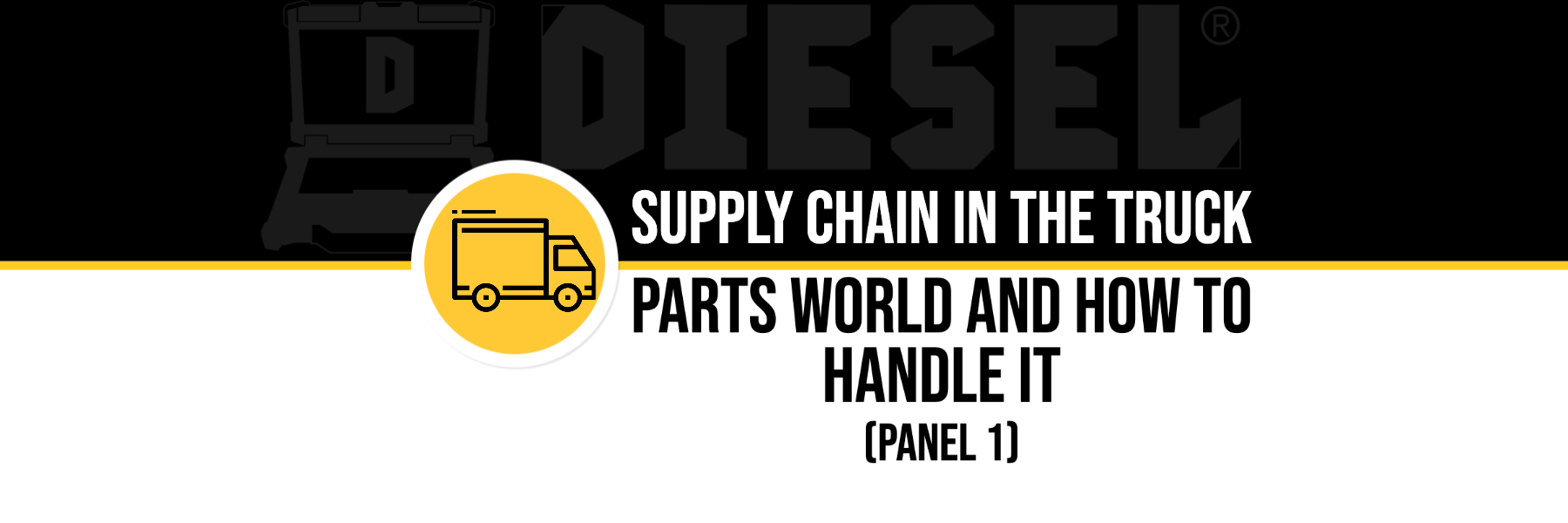
Supply Chain In the Truck Parts World & How to Handle It (Panel 1)
Heavy-Duty Aftermarket Week (HDAW)’s SOLD! brought a wide range of diesel industry experts to Grapevine, Texas this year to discuss hot topics in trucking today. The second panel dealt with creating work-based education opportunities for high school students. The first panel focused on the impact of supply chain stress on the truck parts market and innovative ways to adapt to and overcome the issue. Mike Betts led the conversation, with guests Gene Seroka and Tom Gaszi from Port of LA; John Messina from Tampa Spring Company; Walt Sherbourne from Dayton Parts; and Joe Kripli from APRA.
The panel kicked off with Gene Seroka speaking on the congestion in warehouses and the effect this has had on transporting product from the port to already-packed warehouse facilities. Mr. Seroka explained that Port of LA’s year-end numbers showed 13% more cargo moved than the best year on record, 2018.
“All of what you see here today is because the American consumer’s strength continues to show day-in and day-out at the retail level,” said Seroka. “All this cargo coming in is going straight to our warehouses and stores… online buying capabilities… so we can keep purchasing more. Cargo is moving through here at higher levels than ever, but we still have work to do in the supply chain.”
The supply chain work that Mr. Seroka mentioned is primarily data related and has to do with identifying innovative ways to use workforce and machinery to move the cargo coming into the port. One of the biggest challenges, Mr. Seroka said, was getting all of the necessary people on the same calendar, from truckers to importers. This poses a logistics problem because the port is open on a regular basis 19 hours a day. The solution lies in increasing capacity and jobs throughout the nation, which, in many cases, is easier said than done.
Port of LA security chief Tom Gazsi detailed how the Port of Los Angeles was the first port in the nation to implement a “Cybersecurity Operations Center” in 2014. This cybersecurity technology advances port capabilities.
“What we have discovered is that, historically, we were receiving about 20 million intrusion attempts a month,” said Gazsi. “During the pandemic, those numbers rose to 40 million per month. So the threatscape is significant.”
In response to this increased threat, Gazsi explained, the port went live with their Cyber Resilience Center. This system provides an early warning system for intrusion attempts as well as anonymity for those entities within the port complex that have been affected, increasing overall security.
Seroka stressed that, “Truck drivers are key… We need more… We went to open up the aperture and work even more hours during the day. …We need to bring more folks in and find better ways to attract, recruit, and retain people.”
Following the panel discussion, there was a brief question and answer session. One of the audience questions had to do with how prepaid programs were being affected by escalating freight rates. Walt Sherbourne, from Dayton Parts, said that he did not expect any significant changes in prepaid freight and briefly discussed how Dayton Parts is in the process of merging with Dorman Products and the impact this would have on the market. To learn more about this and other questions, see the video link below.
To see the complete panel from HDAW, click here.